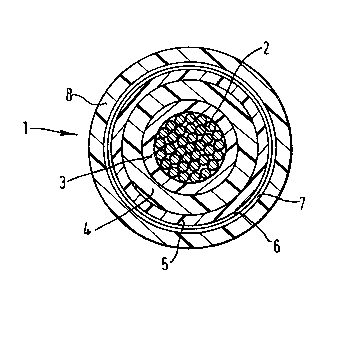Some of the information on this Web page has been provided by external sources. The Government of Canada is not responsible for the accuracy, reliability or currency of the information supplied by external sources. Users wishing to rely upon this information should consult directly with the source of the information. Content provided by external sources is not subject to official languages, privacy and accessibility requirements.
Any discrepancies in the text and image of the Claims and Abstract are due to differing posting times. Text of the Claims and Abstract are posted:
| (12) Patent: | (11) CA 1266102 |
|---|---|
| (21) Application Number: | 1266102 |
| (54) English Title: | ELECTRIC CABLES |
| (54) French Title: | CABLES ELECTRIQUES |
| Status: | Expired and beyond the Period of Reversal |
| (51) International Patent Classification (IPC): |
|
|---|---|
| (72) Inventors : |
|
| (73) Owners : |
|
| (71) Applicants : |
|
| (74) Agent: | GOWLING WLG (CANADA) LLP |
| (74) Associate agent: | |
| (45) Issued: | 1990-02-20 |
| (22) Filed Date: | 1986-07-30 |
| Availability of licence: | N/A |
| Dedicated to the Public: | N/A |
| (25) Language of filing: | English |
| Patent Cooperation Treaty (PCT): | No |
|---|
| (30) Application Priority Data: | ||||||
|---|---|---|---|---|---|---|
|
- 1 -
ABSTRACT
ELECTRIC CABLES
An electric cable having a current carrying
conductor provided with an extruded polymeric insulating
layer, has a layer of a high permittivity material
extruded over the whole length of the insulating layer,
which layer is covered with semi-conducting tape in
contact therewith.
Note: Claims are shown in the official language in which they were submitted.
Note: Descriptions are shown in the official language in which they were submitted.

2024-08-01:As part of the Next Generation Patents (NGP) transition, the Canadian Patents Database (CPD) now contains a more detailed Event History, which replicates the Event Log of our new back-office solution.
Please note that "Inactive:" events refers to events no longer in use in our new back-office solution.
For a clearer understanding of the status of the application/patent presented on this page, the site Disclaimer , as well as the definitions for Patent , Event History , Maintenance Fee and Payment History should be consulted.
| Description | Date |
|---|---|
| Time Limit for Reversal Expired | 2000-02-22 |
| Letter Sent | 1999-02-22 |
| Grant by Issuance | 1990-02-20 |
There is no abandonment history.
| Fee Type | Anniversary Year | Due Date | Paid Date |
|---|---|---|---|
| MF (category 1, 8th anniv.) - standard | 1998-02-20 | 1998-01-28 |
Note: Records showing the ownership history in alphabetical order.
| Current Owners on Record |
|---|
| PIRELLI GENERAL PLC |
| Past Owners on Record |
|---|
| EDMUND HUGH BALL |